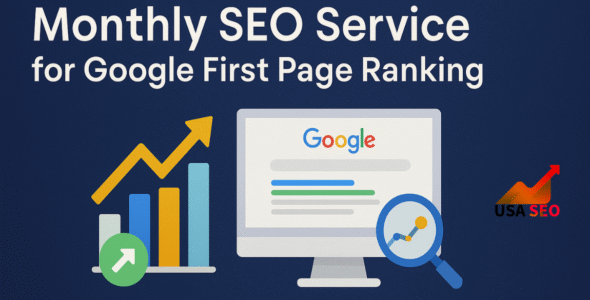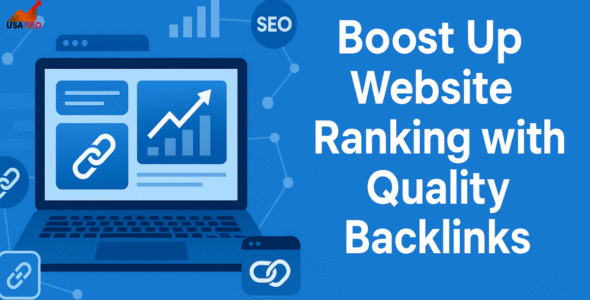A complete plan that fits your business goals and client wants is needed to make a digital marketing strategy that works. Start by setting clear, measurable goals, like getting more people to visit your website, getting more leads, or making more people aware of your brand. Do a lot of market research to find out what your target audience likes, how they act, and what bothers them.
Then, make specific buyer characters to help you with your work. Look at your rivals to find gaps in the market and chances to set yourself apart. Create a content plan that includes useful, high-quality material that is tailored to the interests of your audience and search engine-friendly. Use social media platforms wisely by interacting with your followers and picking the outlets that help you reach your business goals. Implement email marketing strategies with personalized content to develop leads and drive sales.
Look into paid promotion options, like Google Ads and ads on social media sites, to get more focused visitors and make your business more visible. Regularly check and study success indicators to make changes to your strategy based on data-driven insights. This will help you keep improving and stay on track with your marketing goals.
Knowing Who You’re Writing For
To create an effective digital marketing plan, a deep understanding of your audience is essential. Begin by collecting specific personal information, such as age, gender, area, and income level. This helps in creating tailored marketing messages and choosing suitable platforms. Next, look into psychographic data, including hobbies, values, and lifestyle choices, to gain insight into what drives your audience and how they interact with content.
Utilize tools like Google Analytics, social media insights, and customer polls to collect this data and spot patterns and trends. Developing detailed buyer personas is a critical step in this process. These characters are semi-fictional images of your dream customers, based on real data and market studies. They should include information about their goals, obstacles, and buying habits, giving a clear picture of who they are selling to.
By knowing these personalities, you can adjust your content, message, and general marketing strategy to meet their unique needs and desires successfully. This focused method improves connection, drives more important conversations, and ultimately, adds to the success of your digital marketing efforts.

Defining Clear Objectives
Setting clear, measurable goals is a basic step in building a successful digital marketing strategy. Objectives should be matched with your overall business goals and can include growing website traffic, creating leads, boosting brand knowledge, or driving sales.
SMART Goals Framework
Employ the SMART goals framework—Specific, Measurable, Achievable, Relevant, and Time-bound—to ensure that your aims are well-defined and achievable. For instance, instead of a general goal like “increase website traffic,” set a SMART goal such as “increase organic website traffic by 20% within the next six months.”
Competitive Analysis
A thorough competition study gives insights into your rivals’ plans and helps spot chances and risks in the market. Analyze their digital footprint, including website performance, content strategy, social media activity, and SEO methods. Tools like SEMrush, Ahrefs, and Moz can help in reviewing your competitors’ strengths and flaws.
Identifying Gaps and Opportunities
By knowing what your rivals are doing, you can find gaps in their plan and turn them to your advantage. For example, if your competitors are not focused on a particular term or area, it may give a chance for you to control that space.
Establishing a Content Plan
Content marketing is at the heart of any good digital marketing strategy. Creating high-quality, useful content helps in connecting your audience and building your brand as an expert in your business. Your content plan should include a mix of blog posts, papers, images, movies, and case studies.
- Material Creation and Curation: Focus on making and organizing useful material that connects with your target audience. Use SEO best practices to improve your content for search engines, including keyword study, on-page SEO, and link building. Incorporate visual elements and engaging features to improve user interaction.
- Content Calendar: A content calendar helps in planning and ordering your content efforts. Plan your material around important dates, business events, and product launches. Regularly review and change your plan based on success data and crowd comments.

Harnessing Social Media
Social media sites are strong tools for building brand recognition and connecting with your audience. Develop a social media plan that fits with your general digital marketing goals and includes platform-specific methods.
Choosing the Right Platforms
Select social media sites that best fit your business and goal community. For instance, LinkedIn is ideal for B2B marketing, while Instagram and TikTok are effective for B2C interaction. Tailor your material and message to fit each platform’s unique features and community.
Engagement and Group Building
Focus on interacting with your audience through regular posts, answers to comments, and involvement in relevant conversations. Building a strong online group creates trust and encourages good word-of-mouth recommendations.
Marketing by email
Email marketing remains a highly effective tool for developing leads and creating sales. Develop a smart email marketing plan that includes segmentation, tailoring, and automation.
Building an Email List
Grow your email list through different methods, including website sign-ups, social media promotions, and lead offers such as eBooks or workshops. Ensure that your sign-up process is user-friendly and offers clear value to potential users.
Crafting Effective Emails: Design engaging email campaigns with personalized content, attention-grabbing subject lines, and clear calls-to-action (CTAs). Analyze read rates, click-through rates, and sales data to constantly improve your email strategy.
Paid Advertisement
Paid advertising can greatly improve your digital marketing efforts by boosting exposure and driving focused visitors to your website. Explore different choices, such as pay-per-click (PPC) advertising, display ads, and social media ads.
- Google Ads: Utilize Google Ads to target specific terms and groups. Set up campaigns with well-defined goals, improve ad copy and exit pages, and watch performance to ensure maximum ROI.
- Social Media Ads: Leverage social media ads to reach a wider audience and drive participation. Use advanced targeting choices to ensure your ads are shown to the most relevant people based on their hobbies, behaviors, and demographics.

Measuring as well as Analyzing Success
Effectively measuring and studying performance is crucial for improving your digital marketing strategy and meeting your business goals. Start by creating clear Key Performance Indicators (KPIs) that match your goals. Common KPIs include internet visits, conversion rates, lead creation, and return on investment (ROI). Use tools such as Google Analytics, social media analytics, and email marketing apps to track these data.
Regularly watch your KPIs to measure the success of your efforts. For example, examine website traffic data to understand which sources drive the most users and which material connects best with your audience. Evaluate conversion rates to determine how well your marketing efforts are turning leads into customers. For email marketing, review read rates, click-through rates, and delete rates to measure interest and improve your message.
Data processing should be a constant process. Use lessons gained from performance data to change your strategies—optimize ineffective elements, scale successful tactics, and make informed choices to enhance total effectiveness. Continuous review guarantees that your digital marketing efforts stay flexible, current, and matched with your business goals.
Key performance metrics (KPIs)
Key Performance Indicators (KPIs) are important measures used to rate the success of your digital marketing strategy efforts and track progress toward your business goals. KPIs provide measurable data that helps you understand how well your plans are working and where changes may be needed.
- Website Traffic: This KPI tracks the number of visits to your website. Tracking total hits, unique users, and page views helps measure the success of your content and SEO tactics. Tools like Google Analytics provide insights into traffic sources, user behavior, and popular material.
- Conversion Rate: This measure shows the proportion of users who finish a wanted action, such as making a purchase, signing up for a magazine, or filling out a contact form. A high conversion rate suggests that your website and marketing efforts are successfully driving user action.
- Lead Generation: For companies working on lead acquisition, counting the number of leads created through various channels—such as email marketing, landing pages, or social media—helps measure the success of your lead generation strategies.
- Return on Investment (ROI): ROI measures the success of your marketing efforts by comparing the income produced to the costs spent. A good ROI shows that your marketing efforts are yielding cash benefits compared to the investment.
- Engagement Metrics: On social media, KPIs such as likes, shares, comments, and click-through rates measure viewer engagement with your material. High involvement levels show the success of your material in catching and keeping viewer interest.
- Customer Acquisition Cost (CAC): This KPI measures the cost of gaining a new customer. By studying CAC, you can measure the efficiency of your marketing spend and find places where you can improve costs.
- Customer Lifetime Value (CLV): CLV measures the total income a customer is expected to make during their relationship with your business. Understanding CLV helps in judging the long-term value of gaining and keeping people.
Regularly watching and studying these KPIs allows you to make data-driven choices, improve your marketing strategies, and ensure that your efforts match your overall business goals.

Adjusting Your Digital Marketing Strategy
Adjusting your digital marketing strategy involves continuously evaluating performance metrics and adapting your approach based on data-driven insights. Regularly review key performance indicators (KPIs), such as website traffic, conversion rates, and engagement levels, to identify areas for improvement.
If certain tactics are underperforming, pivot your strategy by testing new approaches, optimizing content, or reallocating resources to more effective channels. Stay agile and responsive to market trends and audience feedback to ensure your strategy remains relevant and effective in achieving your business goals.
 My Account
My Account 


